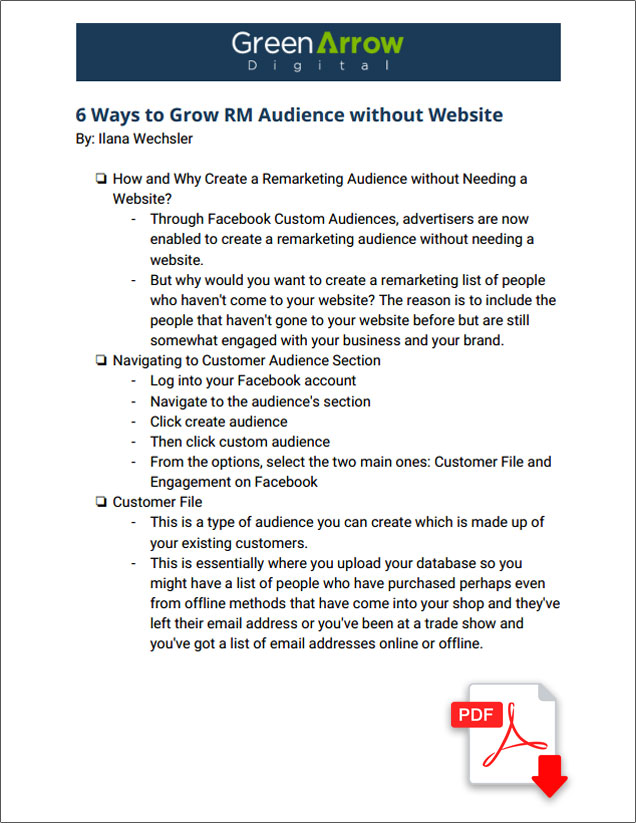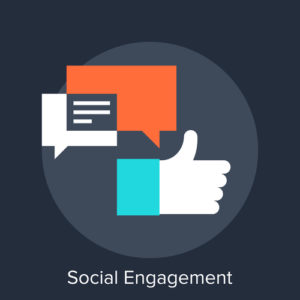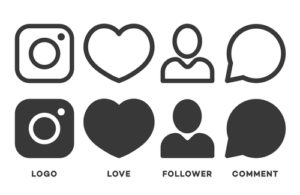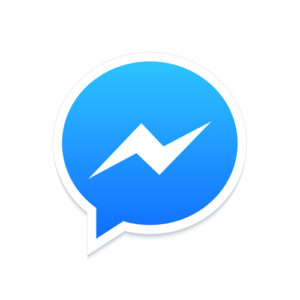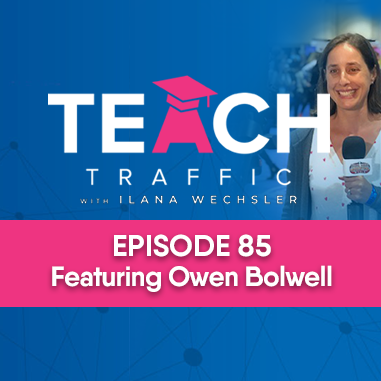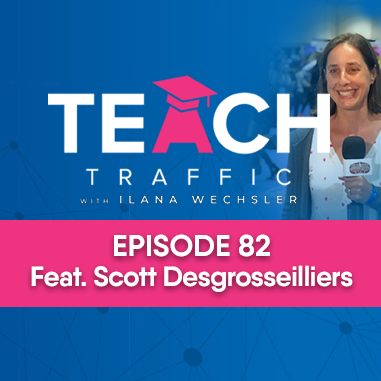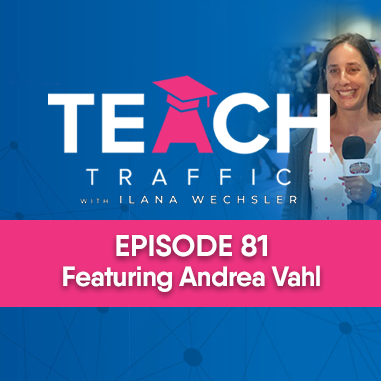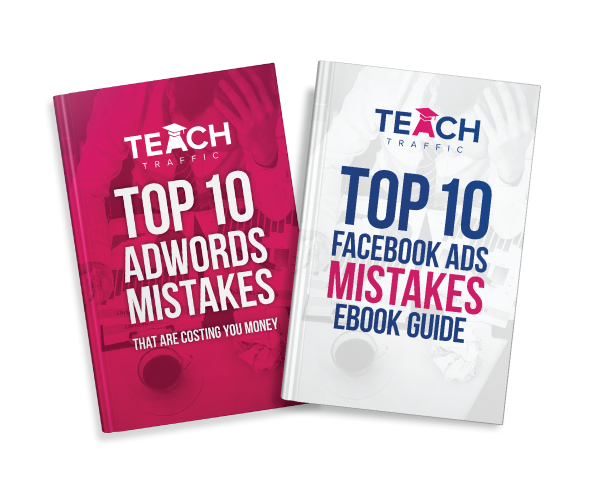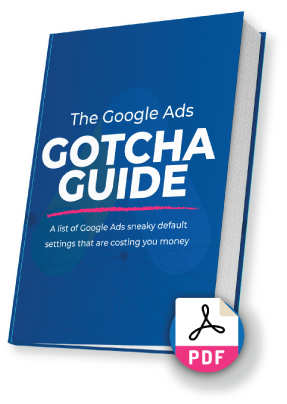6 Different Ways To Grow A Remarketing List Without Needing A Website
In the podcast:
01:14 – How and why create a remarketing audience without needing a website
01:57 – Navigating to customer audience section
02:28 – Customer File
e04:07 – Engagement on Facebook
04:28 – Video Engagement
05:33 – Facebook Page Engagement
06:09 – Lead Generation Engagement
07:17 – Instagram Business Profile Engagement
07:51 – Messenger Engagement
Remarketing is a great way to get positive ROI from your ads. So we reveal 6 additional ways you can grow a remarketing list, without even people visiting your website! Don’t miss this episode with some advanced tactics you can use today
In this article, we’re going to be talking about the six different ways that you can create a marketing audience without even needing a website. Sounds a bit crazy right? So let’s get stuck right in here.
So how are we going to create a remarketing audience if people don’t event go to your website? We’re going to do this through Facebook Custom Audiences. Why would you want to create a remarketing list of people who haven’t come to your website? The reason is, if you’ve done any kind of remarketing you’ve probably found that it works really well. Right. There’s a reason why so many businesses do it because it is very, very effective and it’s very, very targeted ads. So this is a way of adding to your remarketing list to include the people that haven’t gone to your website before but are still somewhat engaged with your business and your brand.
Navigating to customer audience section within Facebook
You have to log into your Facebook account, navigate to the audience’s section and when you’re in the audience’s section you click create audience., and then you click a custom audience and when you get to this section you’re faced with a couple of options. The two main ones that you’re going to be using is what’s called the customer file and the second option is engagement on Facebook.
6 Different Ways in Creating a Remarketing Audience without Website
1. Customer file
This is essentially where you upload your database so you might have a list of people who have purchased perhaps even from offline methods that have come into your shop and they’ve left their email address or you’ve been at a trade show and you’ve got a list of email addresses online or offline.
Whatever way you have created this database of people, you can upload this database to Facebook and then showed those people ads. Now what Facebook does is they match those email addresses with the Facebook login email addresses. Word of warning, you’re not going to get a 100 percent match rate but these days it is getting better and better specially now that you can also match up mobile phone numbers which is a component as well within the customer file option.
One thing you might be wondering is why would I want to upload my database and pay for ads for these people when I can just email them for free? I mean after all that’s why I’ve got their email address. And the reality is that these days people are bombarded with emails and so open rates are really not what they used to be. So this is a way of getting an additional chance of getting in front of your database. Plus they also have the option of very easily sharing your ad if it’s a good ad with their Facebook user-base as well as commenting and getting really good engagement on your ad you can use that ad when you go out to cold audiences.
We like to think of it as going from listening to music with one stereo to surround sound so combining our e-mail marketing with Facebook ads.
2. Engagement on Facebook.
That’s the option that you will click on when you click create a custom audience and there’s a number of different options. And this is where we’re going to create the remaining five different marketing audiences.
2.1 Video Engagement
You can create a list of people who have engaged with your video in any way. So yes, you might be running some video ads whether you’ve paid to boost them or not. Regardless what Facebook will do is it can create a list of people who have watched a certain portion of your video.
Now I have to mention you don’t know who these people are specifically. You don’t know their profile yet their name or their e-mail address. It just puts it into an automatic list of those people. And you might want to create a list of people who have watched let’s say 10 percent of your video and show those people an ad vs. another list of people who may have watched your entire video because maybe you were a show. Those people are different. And we do this lots and lots of times for our clients and we find it works extremely well.
If you are running any kind of videos on Facebook which I suggest you do because it is such a visual and engaging platform then these video engagement audiences we get really really good results from.
2.2 Engagement on our Facebook page
And really you can also create subcategories of these people so you can create a master list of everyone who is engaged with your page in any way. Maybe someone has liked one of your post, commented on one of your posts, liked an ad, shared an ad, or any kind of interaction to some degree and you can add those people to an audience to show them ads. We also get really good results with this. And I suggest you give them a whirl.
2.3 Lead generation engagement
So a lead generation is a campaign objective that you may have chosen in which you could show ads to people that they can give you their email address without even leaving the Facebook ad platform. So when they first rolled out I actually didn’t like them very much because you couldn’t do remarketing. So I wanted to be able to show ads to people who opened my lead generation form and perhaps didn’t fill in their details.
Facebook listened to fellow marketers like myself and others who were jumping up and down saying I want to use this and I can’t. And they added that feature. So if you run any kind of lead generation ads, you might want to create a lead generation engagement audience so that you can show ads to people who have potentially opened your lead form and not submitted. And also maybe create an audience of people who have submitted the form because maybe you want to show them a different ad. It’s all about ad relevance isn’t it? And this is a way of really segregating your visitors or users. By doing this method.
2.4 People who have interacted with your Instagram account
So much the same like what you did with your Facebook account. You can create a list of people who are engaged with your Instagram account, be it like one of your posts etc, etc.. Exactly the same method. If you’ve got a really big Instagram account then this is probably the option that’s best for you. You can take your Instagram with people and follow them on Facebook.
2.5 Messenger
You can create an audience of people who have sent a message to your page and send them an ad straight into the messenger app. Now I would probably use this with caution and I’d be really selective about when and where and how I use this form of engagement. But some people do it and they swear by it and they get really really good results. Essentially if somebody has sent a message via your Facebook page you can create a list of those people and send them a message back.
So I hope you found this article helpful. If you like what you’ve read, you can also visit Talking Web Marketing podcast for more information or resources.
